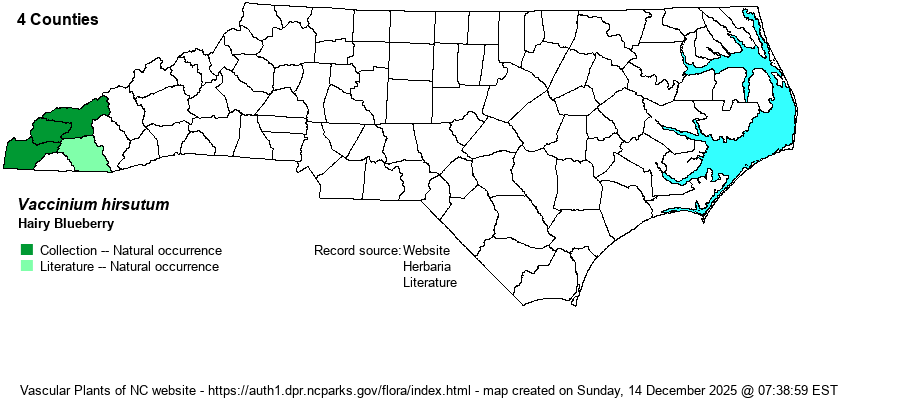| Author | Buckley | |
| Distribution | Occurs only in the southwestern Mountains, ranging north and east to Swain and Macon counties.
This is an extreme southern Appalachian endemic, with a small and tight range only in southwestern NC and adjacent mountains of SC, GA, and southeastern TN.
| |
| Abundance | Despite it being found in only four counties in the state, it is locally fairly common. Because of its quite small global range, the NCNHP considers it to be a State Watch List species. | |
| Habitat | This species is restricted to dry, upland, and often xeric forests, always inside a forest and not on exposed outcrops and openings. It favors pine-oak and oak-hickory forests. Despite RAB (1968) saying “Deciduous woods at high elevations”, this seems to be incorrect; most stands of this species are found well below 3500 feet, and it is most widespread in Cherokee County, where most of the ranges there do not reach 4000 feet. | |
| Phenology | Blooms in April and May, apparently as the leaves are unfurling; fruits in June and July. | |
| Identification | This is one of the “lowbush” blueberries, growing to only 1.5-2 feet high on average. The deciduous leaves are elliptic and rather small, reaching only about 1-1.5 inches long. However, as the common and scientific names imply, this species is easily identified at all seasons by its very hairy twigs and leaves, especially on the undersides. Even the fruits are densely hairy! The species can grow in quite extensive stands, as can its fairly closely related “brother” – V. pallidum. Thus, though not often encountered by most biologists in the mountains, when hiking in dry forests in Cherokee and in a few neighboring counties, you may run across a number of colonies of this oddly hairy species. | |
| Taxonomic Comments | RAB (1968) suggested that the species might be just a subspecies of V. vacillans (now V. pallidum). However, no recent treatment has lumped these two species.
| |
| Other Common Name(s) | Woollyberry, Hairy Huckleberry | |
| State Rank | S3 | |
| Global Rank | G4 | |
| State Status | W1 | |
| US Status | | |
| USACE-agcp | | |
| USACE-emp | | |

